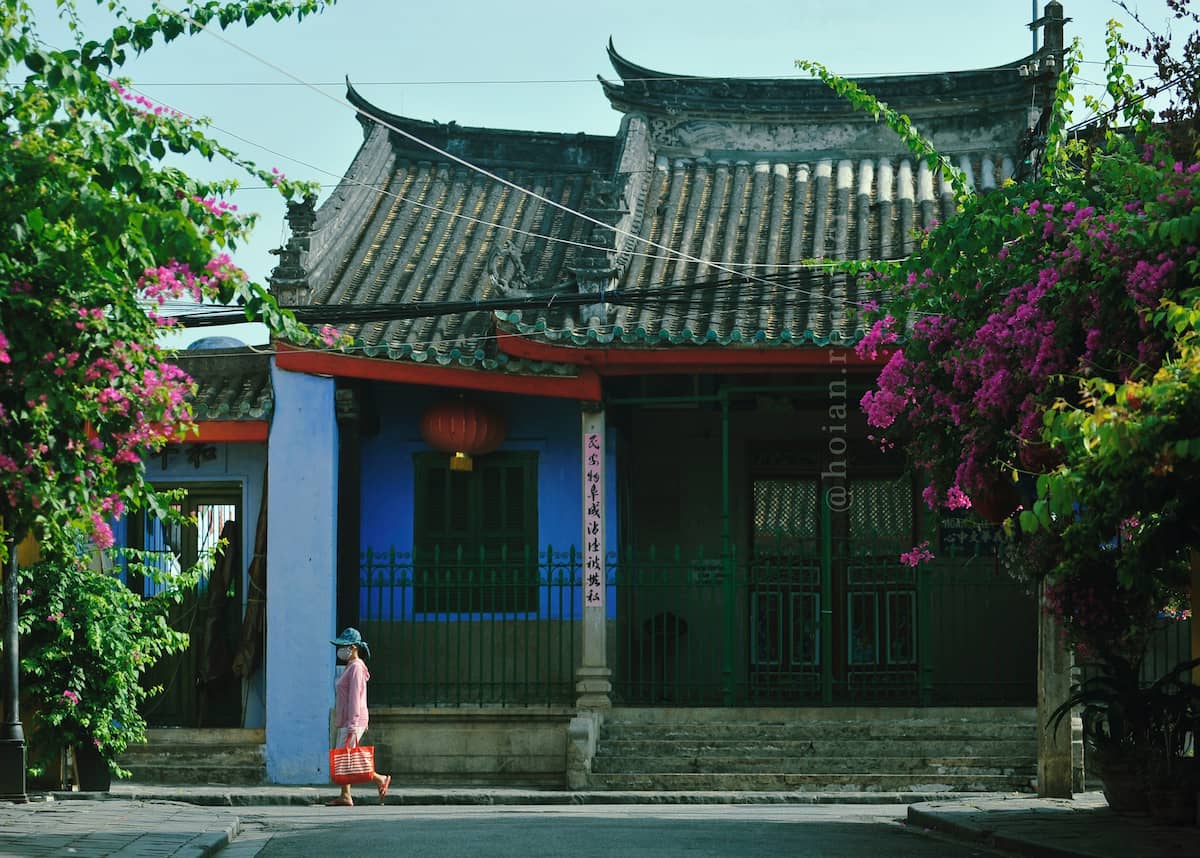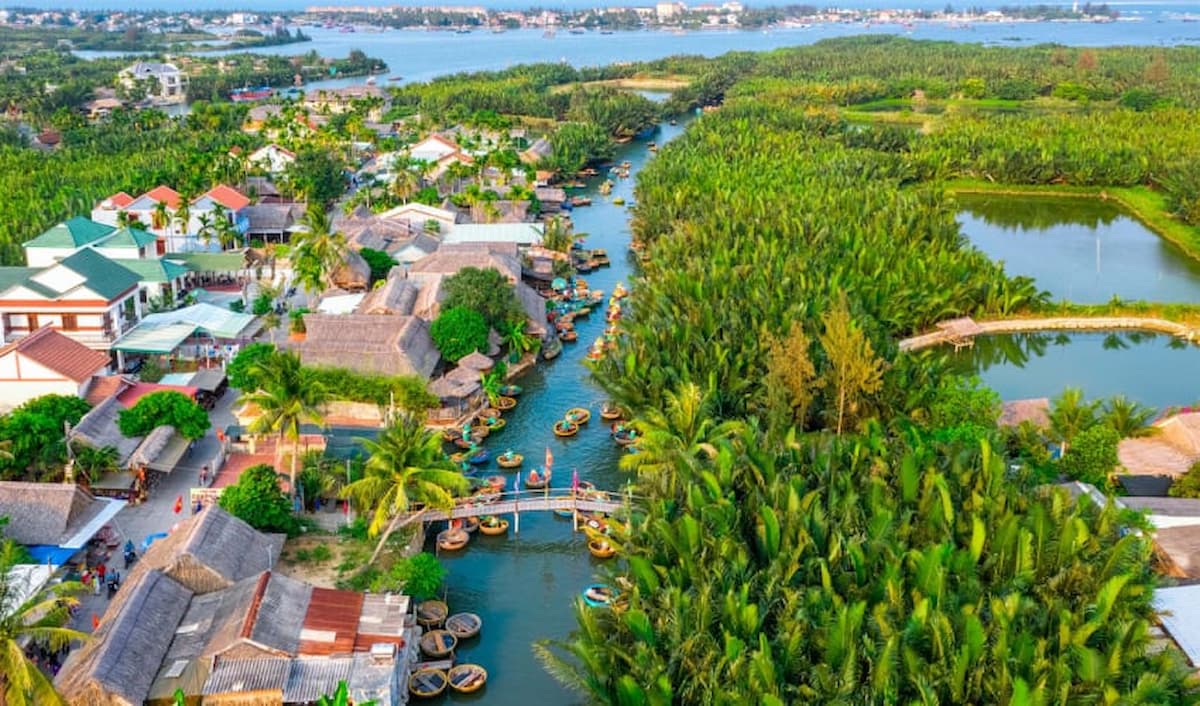A Complete Guide to Visit Da Nang’s Monkey Mountain
Da Nang, a place where modernity and tradition intertwine, has upheld a unique tapestry of experiences for every visitor. One such experience that stands out is the exploration of the famed Monkey Mountain (or Son Tra Peninsula). From the playful monkeys that give the mountain its name to the breathtaking views from the summit, every step on Monkey… Continue reading A Complete Guide to Visit Da Nang’s Monkey Mountain
Da Nang, a place where modernity and tradition intertwine, has upheld a unique tapestry of experiences for every visitor. One such experience that stands out is the exploration of the famed Monkey Mountain (or Son Tra Peninsula).
From the playful monkeys that give the mountain its name to the breathtaking views from the summit, every step on Monkey Mountain promises an adventure.

What is Monkey Mountain?
Perched on the Son Tra Peninsula, the Son Tra Mountain, colloquially known as Monkey Mountain, towers at a height of 693 meters, offering a bird’s eye view of the Da Nang Bay and the East Sea.
This verdant oasis is a sanctuary for a myriad of plant and animal species, including the endangered Red-shanked douc langur. In fact, there’s a diverse range of primates here.
The name “Monkey Mountain” was given by the French army because the soldiers saw a huge troop of monkeys on this mountain during their colonization in Vietnam. The name stuck for the locals since then.
Plus, the mountain’s strategic location made it a significant site during the American-Vietnam War. It was home to two radar domes and a helicopter pad, remnants of its past that now serve as intriguing points of interest.
The Monkey Mountain Facility, a U.S. military communications base during the war, also found its home here.
Today, Monkey Mountain is a cherished retreat for locals and tourists alike. Every year, it attracts Buddhist pilgrims from Vietnam and around the world. The sacred Linh Ung Pagoda and 67-meter-high Guanyin statue make the mountain a true hotspot of the city.
Its pristine beaches and panoramic views over Hai Van Mountain, Cham Island, Da Nang City and Son Tra Peninsula also make it an ideal escape from the city’s hustle and bustle.
Whether you’re an adrenaline junkie or a nature enthusiast, Monkey Mountain offers an immersive journey into Vietnam’s rich natural and historical landscape.
The Nature of Monkey Mountain
Monkey Mountain, where nature’s symphony orchestrates a timeless spectacle of beauty and tranquility, is home to the rarest beings on Earth.

1. Animals
The mountain’s most distinguished resident is the Red-shanked douc langur, a primate celebrated for its vibrant coloration. Remarkably, over 60% of the world’s population of this species resides within this mountain range.
The Rhesus macaques and long-tailed macaques are other primates that are frequently sighted in the area. The Pygmy slow loris, a small nocturnal primate known for its leisurely pace and endearing appearance, also calls Son Tra Mountain home.
The mountain’s fauna also includes more unusual inhabitants such as the Vooc Cha Va, Chan Nau, and wild cat. The Chon Bac Ma is another creature that has found refuge in this habitat.
The biodiversity of Son Tra Mountain extends beyond these species. The latest inventory of terrestrial animals in Son Tra lists 41 mammals, 151 birds, 52 reptiles, 18 amphibians, and at least 185 insects (including 86 butterflies, 20 beetles, and 79 other species).
Visitors to Son Tra Mountain are afforded the rare opportunity to observe these animals in their natural environment. However, it is crucial to remember to respect these creatures and their habitat during your exploration.
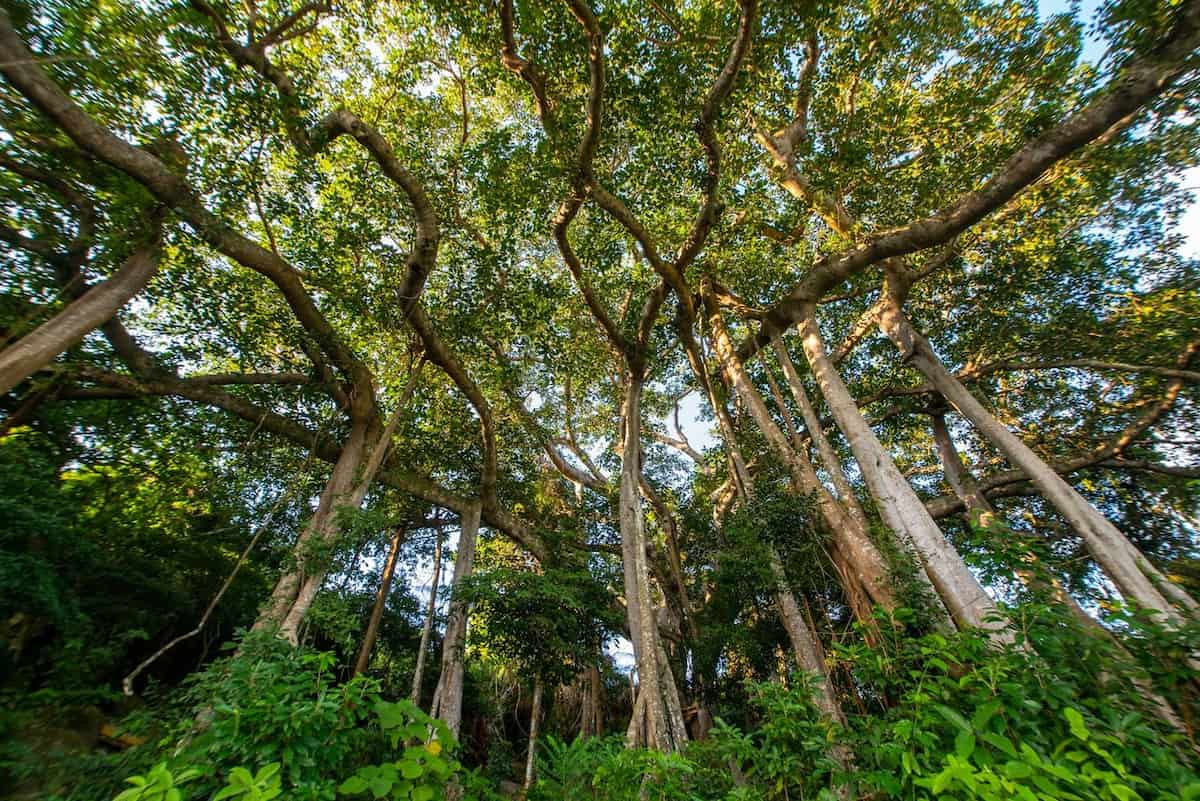
2. Plants
Nestled beside the sea, Monkey Mountain boasts a primeval forest that offers a cool climate and a breathtaking natural landscape.
Among the verdant foliage of Son Tra Mountain, the banyan tree stands out. This mountain is home to numerous banyan trees, including one particularly majestic specimen with roots cascading from its branches to the ground, creating an awe-inspiring and sacred space. Locals often refer to this tree as the great tree or the thousand-year banyan tree.
But the biodiversity of Son Tra Mountain extends beyond its terrestrial flora. The surrounding peninsula houses 191 species of coral, three species of sea-grass, 72 types of seaweed, 53 mollusk species, 23 kinds of echinodermata (such as starfish and urchins), and 221 plankton species.
The ideal time to visit this ecological gem is from March to September when the weather is dry and pleasant, and the sea is calm. The peninsula is especially enchanting from April to June when the forest is ablaze with a riot of colorful blooms.
3. Beaches
The Son Tra Peninsula is a treasure trove of natural beauty, and its beaches are no exception. Here are some of the coastal gems you can discover:
- But Beach: This beach is a haven for water enthusiasts, with its crystal-clear blue waters offering an ideal setting for swimming and snorkeling.
- Tien Sa Beach: A tranquil retreat where you can bask in the sun’s warmth and immerse yourself in the calming rhythm of the sea.
- Da Den Beach: Offering breathtaking views, this beach is a perfect spot to unwind and soak in the serene surroundings.
- South Beach and North Beach: These beaches are part of the peninsula’s charm, offering a plethora of water activities for the adventurous at heart.
These beaches are not just picturesque but also safe for swimming. If you’re up for more adventure, you can explore the underwater world through snorkeling or take to the skies with paragliding.
You might also enjoy a leisurely day fishing or collecting sea snails and shells with the locals. The azure waters of these beaches make them an idyllic spot for both relaxation and adventure.
So, whether you’re a beach bum or an adrenaline junkie, the Monkey Mountain base has something for everyone. Dive in and enjoy!
Famous Spots on Monkey Mountain
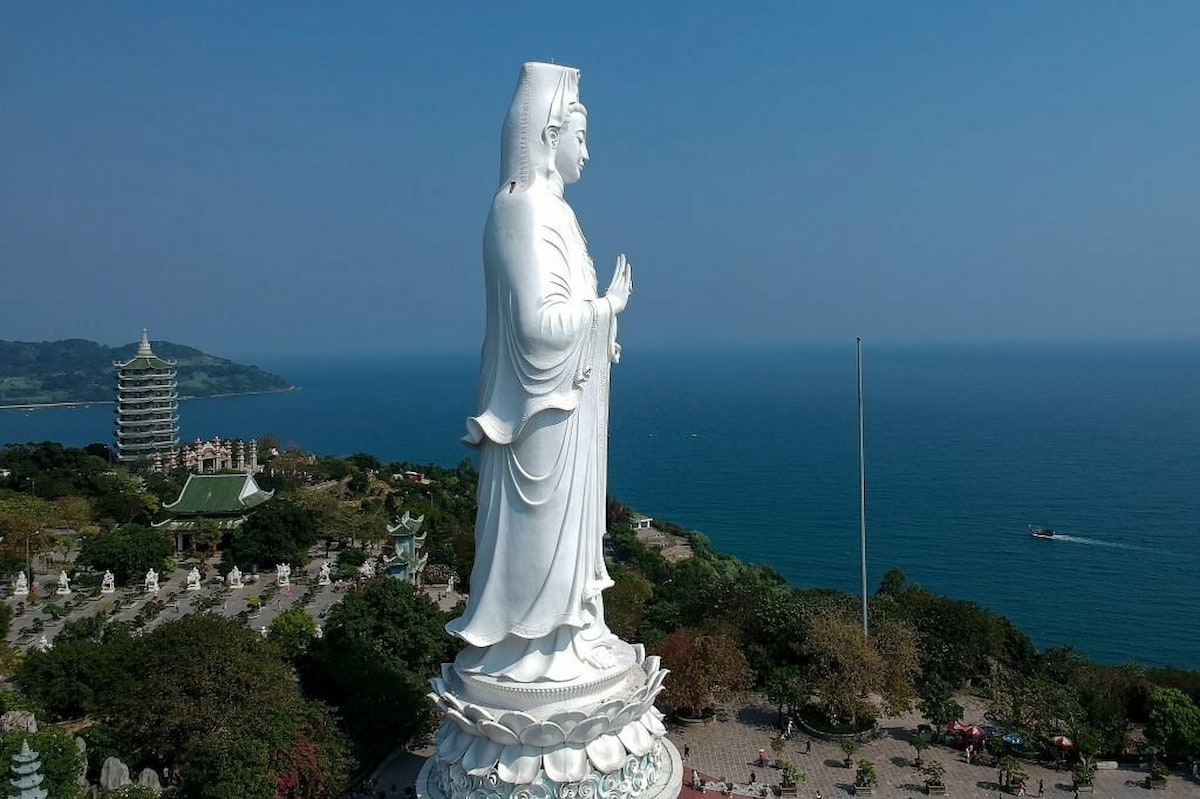
1. Linh Ung Pagoda & Guanyin Statue
639 meters above sea level and 10 kilometers away from the center of Da Nang City, the Linh Ung Pagoda is a beacon of tranquility and spiritual enlightenment that draws both local and international Buddhist followers and tourists.
The pagoda was inaugurated in July 2010 after six years of meticulous construction. It’s regarded as the most splendid of its kind in Da Nang, both in terms of architecture and artistic value.
The pagoda complex is dominated by the awe-inspiring 67-meter white Bodhisattva Guanyin statue, which stands proudly atop a lotus-shaped platform. This statue, the tallest Buddha statue in Vietnam, is a symbol of compassion and mercy in Buddhism and can be seen from virtually every corner of Da Nang.
The statue is believed to have warded off big storms since the day it was completed in 2010. Myths around this statue add to the holiness of the pagoda and turn itself into a must-visit on Monkey Mountain.
The Xa Loi Tower, another architectural marvel within the pagoda complex, stands 30 meters high and houses nearly 200 statues of Buddha, Bodhisattva, and Arhat, creating a sacred space that resonates with spiritual energy.
The pagoda is also steeped in local lore. The site is known as the birthplace of many fascinating and sacred tales, adding an extra layer of mystique to this already captivating destination.
Whether you’re seeking spiritual solace or simply wish to marvel at the stunning architecture and panoramic views, a visit to the Linh Ung Pagoda promises to be an unforgettable experience.

2. Ban Co Peak (Chessboard Peak)
It’s the crowning glory of Monkey Mountain, they say.
And it’s true!
At an elevation of nearly 600 meters, this summit offers a vantage point like no other, with panoramic vistas encompassing the entirety of Da Nang city, the Ba Na Hills, Cham islands, Hai Van pass, Lien Chieu bay, and the distant Eastern sea.
Plus, the journey to Ban Co Peak is an adventure in itself. The route winds its way up the mountain, with steep slopes that challenge even the most seasoned travelers.
But the reward is well worth it. As you ascend, the air grows thicker and the scenery on either side of the road becomes increasingly captivating.
Ban Co Peak owes its name to a local legend about two fairies who were fond of playing chess. According to the tale, they would often pause here for a game.
On one occasion, one of the fairies was distracted by female deities frolicking on Tien Sa beach and lost his game. In a fit of annoyance, he kicked the chessboard into the sea and stormed off to the sky.
To commemorate this legend, a statue depicting a fairy deep in thought over a stone chessboard has been erected at this spot.
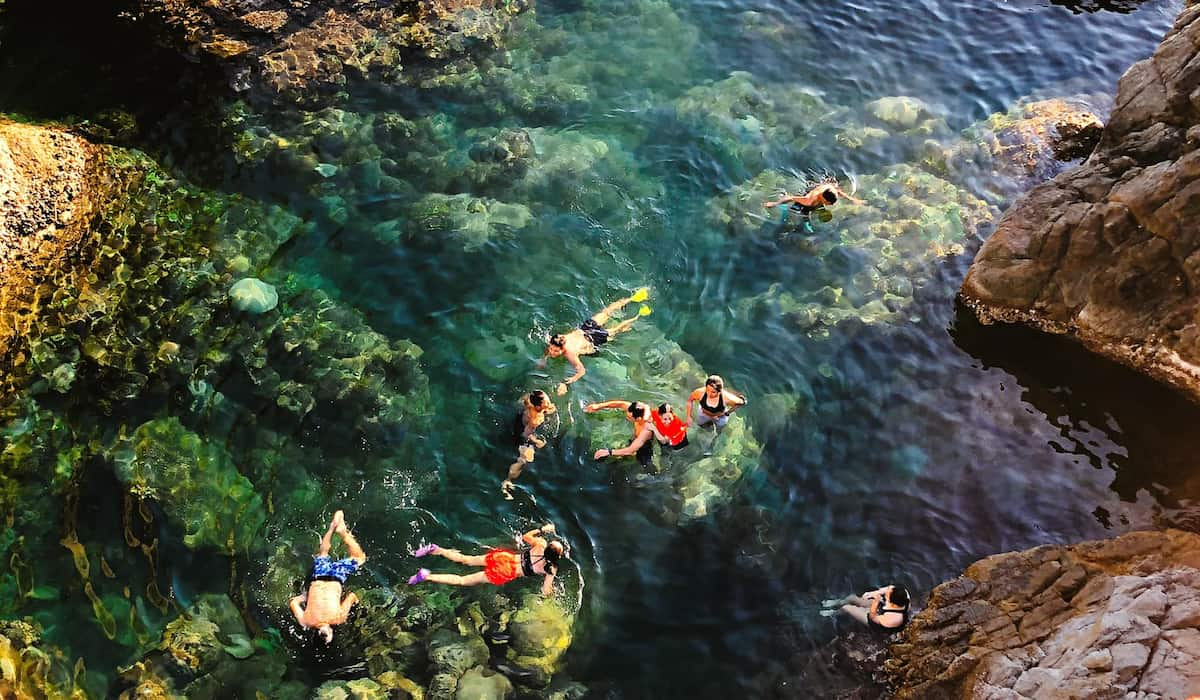
3. Hiking & camping on Son Tra Peninsula
Embarking on a hike up Monkey Mountain offers an opportunity to traverse lush jungle trails and spot rare wildlife species. A moderate hike from Bai Bac Beach to the mountain’s summit typically takes about four hours.
For those with a penchant for motorcycling, the serpentine roads encircling the mountain offer an exhilarating ride. However, reaching the summit requires a robust vehicle.
Once at the top, hikers are rewarded with sweeping views of Hi Van Mountain, Cham Island, Da Nang City, and Son Tra Peninsula.
While camping is not officially permitted on Monkey Mountain itself, there are options in the surrounding region that cater to campers. These sites offer opportunities for hiking, bird-watching, and more.
The most accessible and famous camping site on Son Tra Peninsula is Mui Nghe.
For an adventurous journey to Mui Nghe, start from Vo Nguyen Giap beach (My Khe beach). Follow the direction of Son Tra peninsula, pass by Linh Ung Pagoda, and turn right towards the Thousand Year Banyan Tree (Cây Đa Ngàn Năm).
From there, a short uphill drive leads to a dead end. This is where you leave your vehicle and prepare for a hike.
Follow a small trail into the forest, a path formed by frequent backpackers. It’s a steep descent, so caution is advised.
A five-minute trek will bring you to the sight of Mui Nghe.
5. Monkey Mountain Facility (Army Radar Station)
During the Vietnam War, the U.S. Air Force and Marines established the Monkey Mountain Facility on Son Tra as a strategic base. Its primary functions were to intercept communications from North Vietnam and manage fighter operations.
The base remained operational from 1962 to 1972. Today, this facility stands as a historical landmark, with its radar domes now under the control of the Vietnamese military.
While Monkey Mountain is open to tourists who can enjoy its breathtaking views and diverse wildlife, the Army Radar Station remains an active military site and is therefore off-limits.
Visitors are urged to respect these boundaries for their safety and to avoid interfering with ongoing military operations.

6. Dong Dinh Museum
The Dong Dinh Museum is often referred to as the “Garden of Memory,” is a harmonious blend of forest ecological space and cultural art space.
The museum is thoughtfully divided into four main areas: an antique exhibit area, an art exhibit area, a fishing village memorial, and an ethnographic display house. Each area offers its own unique charm and leaves a lasting impression.
The architecture of the Dong Dinh Museum is a sight to behold. The buildings are designed in the style of hill houses, with varying elevations that follow the natural contours of the land. This modern architectural marvel seamlessly integrates with the surrounding forest ecology.
The Fishing Memorial House offers a glimpse into ancient cultures with photographs of fishing villages and images of the Cham people taken in 1908-1910.
The museum also serves as a hub for art and culture, hosting fine art workshops and rotating exhibitions featuring works from local and international artists.
As you plan your visit to the Dong Dinh Museum, consider combining it with a trip to the Son Tra Peninsula and Linh Ung Pagoda.The museum offers an authentic experience of village life in the past, set among winding paths that transport you to another world.
However, note that some planning may be required for those with mobility issues.
How to Get to Monkey Mountain
There are several options to get to Da Nang’s Monkey Mountain:
- By Car or Taxi: A mere 35-minute drive from the heart of Da Nang will bring you to the foot of the mountain. You can easily hire a taxi or private car for the journey. Tip: Book a Monkey Mountain tour so you can earn free transportation from itself.
- By Motorcycle or Scooter: For those seeking a bit of thrill, the serpentine roads that wind around the mountain offer an exhilarating motorcycling experience. Do note that reaching the summit requires a powerful vehicle, and this route is recommended for experienced riders.
- On Foot: If you’re up for a challenge, a four-hour hike from Bai Bac Beach will lead you to the mountain’s peak.
Starting from the city center, make your way towards Dragon Bridge, Tran Thi Ly Bridge, or Song Han Bridge. Continue straight until you reach the sea, then take a left onto Vo Nguyen Giap Street. Follow this road until you reach Hoang Sa Street, which will lead you to Monkey Mountain.
TIN TỨC LIÊN QUAN
This Hoi An bike tour will take you beyond the well-trodden paths of the ancient town that promises to be as enlightening as it is exhilarating. As you pedal your way through...
For many years, Hoi An Ancient Town has had the hearts of people from over the world for its antique beauty and precious hospitality. As a UNESCO heritage since 1999, it’s the...
Hoi An, a UNESCO World Heritage Site, is a beautifully preserved ancient town that has become one of Vietnam’s most popular tourist destinations. Its charm lies in its unique...
Tucked away from the well-trodden tourist paths of Hoi An, lies a tranquil oasis that offers a glimpse into the authentic Vietnamese way of life. The Cam Thanh Coconut Village, or...





